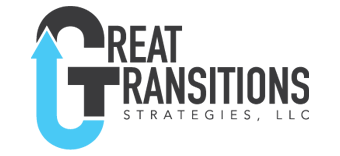“I despise how arrogant she is. She is aloof whenever she walks into a room. Always talking about how concerned she is for the team. In practice, she ignores you unless she needs you and continually transmits rather than listens. Yet, many people tell me, outside of work she is wonderful to be around.”
Is it possible this is a description of you? How authentic is your executive presence?
Does your executive presence represent your authentic self? Should it? In my coaching practice, executive presence is often the sole reason for the engagement. A high performer is told they need to develop their executive presence. Their quandary, what is executive presence and where to start.
Our starting point is broadly defining executive presence followed by the individual elements.
For the broad definition, I think there are at least two answers; 1) how you present yourself, and 2) how you are received by others. Perspective matters. Often what we think we are presenting is not received.
What is the presence you want others to see? As you think about this, are you the sole judge defining your presence? Usually not. What else influences your presence?
Here are a few considerations: industry/organization, position, age, gender, tenure in a position, and I am sure you can think of a few more.
Stereotypes come to mind when you think about any of the above contexts. What image comes to mind for the following: tech, banking, startup, construction, military, nonprofit, small business owner, education (elementary, secondary, higher), medical, public safety?
Evaluate your current role. Does your organization demand a particular presence? Many roles do. Some are written, such as a dress code. Others are unwritten and are part of the culture. What are the expectations of your presence for your level in the organization?
What do you expect of the top leaders in your organization? How different are your expectations for mid-level leaders? Does age, gender, and longevity change your expectations?
This exercise helps set the parameters for your executive presence. Will the expectations for your executive presence allow you to be authentic?
Let’s explore your meaning of authenticity. How much of yourself should be revealed in your executive presence? The question for most is if you are not 100% authentic, are you acting?
Three thoughts to bring clarity are: trust, vulnerability, and professionalism.
Think of starting a new relationship, personal or professional. How much do you reveal about yourself on day one? Compare that to after three, six, or twelve months. Trust and vulnerability guide you. Time reveals how much you trust those in your environment and how vulnerable you will be. Being vulnerable is not oversharing. Where do you set the limits?
Professionalism is the primary consideration I use to set boundaries. Be clear about your standards of professionalism.
Trust, vulnerability, and professionalism can be used as a guide for authenticity of your executive presence. Be deliberate in making your presence an extension of yourself.
If your executive presence is an act, your authentic presence will eventually be revealed. Time, stress, and complacency will reveal it. The more time you spend with your team the more they will see the authentic you.
Have you ever experienced a leader who always tries to project calmness, yet under stress melts down? What is their authentic self? How about the “buttoned-up always socially correct leader” who gets complacent at social events and demonstrates a different version of themselves?
Your presence is what you deliver and what is received 100% of the time. If your presence is inauthentic, it will be revealed.
To be an authentic leader, be deliberate in building your presence by ensuring you know the following:
- How you want to present yourself
- How you want to be received
- The expectations of your organization, position, etc.
- How vulnerable you are willing to be
- How you define professionalism
- How you act under pressure or when totally complacent
The above guidelines will help you set the broad definition of your executive presence. Additionally, the questions help reveal your alignment with your current role.
Now, that you have completed a personal assessment of your executive presence against your role, ask yourself this question: “Am I capable of fulfilling the requirements to be an effective leader at this level?”
If the answer is “yes”, you are ready to dig into the specific elements of executive presence.






Leave a Reply
Want to join the discussion?Feel free to contribute!